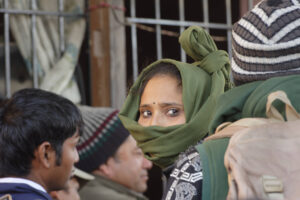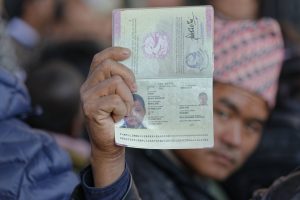Table of Contents
Introduction
In today’s globalized world, labour migration is an increasingly important policy issue. Economic hardship and geopolitical crises leading to the lack of decent work are resulting in growing and diverse migratory movements. In many economies, including emerging economies, ageing populations and declining labour forces are also contributing to the growing mobility of workers. Women are joining migration flows in growing numbers as independent workers, with important consequences for gender equality in countries of origin and destination alike.
We need to understand these dynamic migrant flows and their implications for labour markets, particularly in migrant-dominated sectors.
This page presents statistical information on migrant worker stocks, inflows and outflows.
Data catalogue
| Indicator | Frequency | Database | Subject | Download (with labels) | Download (with codes) | Data explorer |
|---|---|---|---|---|---|---|
| Working-age population by sex, age and place of birth (thousands) | Annual | International Labour Migration Statistics (ILMS) | International migrant stock | .csv .dta .xlsx | .csv.gz | |
| Working-age population by sex, age and citizenship (thousands) | Annual | International Labour Migration Statistics (ILMS) | International migrant stock | .csv .dta .xlsx | .csv.gz | |
| Working-age population by sex, education and place of birth (thousands) | Annual | International Labour Migration Statistics (ILMS) | International migrant stock | .csv .dta .xlsx | .csv.gz | |
| Working-age population by sex, education and citizenship (thousands) | Annual | International Labour Migration Statistics (ILMS) | International migrant stock | .csv .dta .xlsx | .csv.gz | |
| Labour force by sex, age and place of birth (thousands) | Annual | International Labour Migration Statistics (ILMS) | International migrant stock | .csv .dta .xlsx | .csv.gz | |
| Labour force by sex, age and citizenship (thousands) | Annual | International Labour Migration Statistics (ILMS) | International migrant stock | .csv .dta .xlsx | .csv.gz | |
| Labour force by sex, education and place of birth (thousands) | Annual | International Labour Migration Statistics (ILMS) | International migrant stock | .csv .dta .xlsx | .csv.gz | |
| Labour force by sex, education and citizenship (thousands) | Annual | International Labour Migration Statistics (ILMS) | International migrant stock | .csv .dta .xlsx | .csv.gz | |
| Labour force participation rate by sex, age and place of birth (%) | Annual | International Labour Migration Statistics (ILMS) | International migrant stock | .csv .dta .xlsx | .csv.gz | |
| Labour force participation rate by sex, age and citizenship (%) | Annual | International Labour Migration Statistics (ILMS) | International migrant stock | .csv .dta .xlsx | .csv.gz | |
| Labour force participation rate by sex, education and place of birth (%) | Annual | International Labour Migration Statistics (ILMS) | International migrant stock | .csv .dta .xlsx | .csv.gz | |
| Labour force participation rate by sex, education and citizenship (%) | Annual | International Labour Migration Statistics (ILMS) | International migrant stock | .csv .dta .xlsx | .csv.gz | |
| Employment by sex, age and place of birth (thousands) | Annual | International Labour Migration Statistics (ILMS) | International migrant stock | .csv .dta .xlsx | .csv.gz | |
| Employment by sex, age and citizenship (thousands) | Annual | International Labour Migration Statistics (ILMS) | International migrant stock | .csv .dta .xlsx | .csv.gz | |
| Employment by sex, education and place of birth (thousands) | Annual | International Labour Migration Statistics (ILMS) | International migrant stock | .csv .dta .xlsx | .csv.gz | |
| Employment by sex, education and citizenship (thousands) | Annual | International Labour Migration Statistics (ILMS) | International migrant stock | .csv .dta .xlsx | .csv.gz | |
| Employment by sex, status in employment and place of birth (thousands) | Annual | International Labour Migration Statistics (ILMS) | International migrant stock | .csv .dta .xlsx | .csv.gz | |
| Employment by sex, status in employment and citizenship (thousands) | Annual | International Labour Migration Statistics (ILMS) | International migrant stock | .csv .dta .xlsx | .csv.gz | |
| Employment by sex, economic activity and place of birth (thousands) | Annual | International Labour Migration Statistics (ILMS) | International migrant stock | .csv .dta .xlsx | .csv.gz | |
| Employment by sex, economic activity and citizenship (thousands) | Annual | International Labour Migration Statistics (ILMS) | International migrant stock | .csv .dta .xlsx | .csv.gz | |
| Employment by sex, occupation and place of birth (thousands) | Annual | International Labour Migration Statistics (ILMS) | International migrant stock | .csv .dta .xlsx | .csv.gz | |
| Employment by sex, occupation and citizenship (thousands) | Annual | International Labour Migration Statistics (ILMS) | International migrant stock | .csv .dta .xlsx | .csv.gz | |
| Employment-to-population ratio by sex, age and place of birth (%) | Annual | International Labour Migration Statistics (ILMS) | International migrant stock | .csv .dta .xlsx | .csv.gz | |
| Employment-to-population ratio by sex, age and citizenship (%) | Annual | International Labour Migration Statistics (ILMS) | International migrant stock | .csv .dta .xlsx | .csv.gz | |
| Employment-to-population ratio by sex, education and place of birth (%) | Annual | International Labour Migration Statistics (ILMS) | International migrant stock | .csv .dta .xlsx | .csv.gz | |
| Employment-to-population ratio by sex, education and citizenship (%) | Annual | International Labour Migration Statistics (ILMS) | International migrant stock | .csv .dta .xlsx | .csv.gz | |
| Unemployment by sex, age and place of birth (thousands) | Annual | International Labour Migration Statistics (ILMS) | International migrant stock | .csv .dta .xlsx | .csv.gz | |
| Unemployment by sex, age and citizenship (thousands) | Annual | International Labour Migration Statistics (ILMS) | International migrant stock | .csv .dta .xlsx | .csv.gz | |
| Unemployment by sex, education and place of birth (thousands) | Annual | International Labour Migration Statistics (ILMS) | International migrant stock | .csv .dta .xlsx | .csv.gz | |
| Unemployment by sex, education and citizenship (thousands) | Annual | International Labour Migration Statistics (ILMS) | International migrant stock | .csv .dta .xlsx | .csv.gz | |
| Unemployment rate by sex, age and place of birth (%) | Annual | International Labour Migration Statistics (ILMS) | International migrant stock | .csv .dta .xlsx | .csv.gz | |
| Unemployment rate by sex, age and citizenship (%) | Annual | International Labour Migration Statistics (ILMS) | International migrant stock | .csv .dta .xlsx | .csv.gz | |
| Unemployment rate by sex, education and place of birth (%) | Annual | International Labour Migration Statistics (ILMS) | International migrant stock | .csv .dta .xlsx | .csv.gz | |
| Unemployment rate by sex, education and citizenship (%) | Annual | International Labour Migration Statistics (ILMS) | International migrant stock | .csv .dta .xlsx | .csv.gz | |
| Persons outside the labour force by sex, age and place of birth (thousands) | Annual | International Labour Migration Statistics (ILMS) | International migrant stock | .csv .dta .xlsx | .csv.gz | |
| Persons outside the labour force by sex, age and citizenship (thousands) | Annual | International Labour Migration Statistics (ILMS) | International migrant stock | .csv .dta .xlsx | .csv.gz | |
| Persons outside the labour force by sex, education and place of birth (thousands) | Annual | International Labour Migration Statistics (ILMS) | International migrant stock | .csv .dta .xlsx | .csv.gz | |
| Persons outside the labour force by sex, education and citizenship (thousands) | Annual | International Labour Migration Statistics (ILMS) | International migrant stock | .csv .dta .xlsx | .csv.gz | |
| Inactivity rate by sex, age and place of birth (%) | Annual | International Labour Migration Statistics (ILMS) | International migrant stock | .csv .dta .xlsx | .csv.gz | |
| Inactivity rate by sex, age and citizenship (%) | Annual | International Labour Migration Statistics (ILMS) | International migrant stock | .csv .dta .xlsx | .csv.gz | |
| Inactivity rate by sex, education and place of birth (%) | Annual | International Labour Migration Statistics (ILMS) | International migrant stock | .csv .dta .xlsx | .csv.gz | |
| Inactivity rate by sex, education and citizenship (%) | Annual | International Labour Migration Statistics (ILMS) | International migrant stock | .csv .dta .xlsx | .csv.gz | |
| Youth not in employment, education or training (NEET) by sex and place of birth (thousands) | Annual | International Labour Migration Statistics (ILMS) | International migrant stock | .csv .dta .xlsx | .csv.gz | |
| Youth not in employment, education or training (NEET) by sex and citizenship (thousands) | Annual | International Labour Migration Statistics (ILMS) | International migrant stock | .csv .dta .xlsx | .csv.gz | |
| Share of youth not in employment, education or training (NEET) by sex and place of birth (%) | Annual | International Labour Migration Statistics (ILMS) | International migrant stock | .csv .dta .xlsx | .csv.gz | |
| Share of youth not in employment, education or training (NEET) by sex and citizenship (%) | Annual | International Labour Migration Statistics (ILMS) | International migrant stock | .csv .dta .xlsx | .csv.gz | |
| Mean weekly hours actually worked per employee by sex and citizenship | Annual | International Labour Migration Statistics (ILMS) | International migrant stock | .csv .dta .xlsx | .csv.gz | |
| Mean weekly hours actually worked per employee by sex and place of birth | Annual | International Labour Migration Statistics (ILMS) | International migrant stock | .csv .dta .xlsx | .csv.gz | |
| Average monthly earnings of employees by sex and citizenship | Annual | International Labour Migration Statistics (ILMS) | International migrant stock | .csv .dta .xlsx | .csv.gz | |
| Average monthly earnings of employees by sex and place of birth | Annual | International Labour Migration Statistics (ILMS) | International migrant stock | .csv .dta .xlsx | .csv.gz | |
| Stock of nationals abroad by sex and country of residence (thousands) | Annual | International Labour Migration Statistics (ILMS) | Nationals abroad | .csv .dta .xlsx | .csv.gz | |
| Inflow of working-age foreign-born population by sex and country of birth (thousands) | Annual | International Labour Migration Statistics (ILMS) | International migrant flow | .csv .dta .xlsx | .csv.gz | |
| Inflow of working age foreign citizens by sex and country of citizenship (thousands) | Annual | International Labour Migration Statistics (ILMS) | International migrant flow | .csv .dta .xlsx | .csv.gz | |
| Inflow of working-age foreign-born population by sex and education (thousands) | Annual | International Labour Migration Statistics (ILMS) | International migrant flow | .csv .dta .xlsx | .csv.gz | |
| Inflow of working age foreign citizens by sex and education (thousands) | Annual | International Labour Migration Statistics (ILMS) | International migrant flow | .csv .dta .xlsx | .csv.gz | |
| Inflow of nationals returned from abroad by sex and country of previous residence (thousands) | Annual | International Labour Migration Statistics (ILMS) | Nationals abroad | .csv .dta .xlsx | .csv.gz | |
| Inflow of employed foreign-born population by sex and economic activity (thousands) | Annual | International Labour Migration Statistics (ILMS) | International migrant flow | .csv .dta .xlsx | .csv.gz | |
| Working-age foreign-born population by sex and country of birth (thousands) | Annual | International Labour Migration Statistics (ILMS) | International migrant stock | .csv .dta .xlsx | .csv.gz | |
| Inflow of employed foreign citizens by sex and economic activity (thousands) | Annual | International Labour Migration Statistics (ILMS) | International migrant flow | .csv .dta .xlsx | .csv.gz | |
| Inflow of employed foreign-born population by sex and occupation (thousands) | Annual | International Labour Migration Statistics (ILMS) | International migrant flow | .csv .dta .xlsx | .csv.gz | |
| Inflow of employed foreign citizens by sex and occupation (thousands) | Annual | International Labour Migration Statistics (ILMS) | International migrant flow | .csv .dta .xlsx | .csv.gz | |
| Outflow of nationals by sex and country of destination (thousands) | Annual | International Labour Migration Statistics (ILMS) | Nationals abroad | .csv .dta .xlsx | .csv.gz | |
| Working age foreign citizens by sex and country of citizenship (thousands) | Annual | International Labour Migration Statistics (ILMS) | International migrant stock | .csv .dta .xlsx | .csv.gz | |
| Employed foreign-born population by sex and country of birth (thousands) | Annual | International Labour Migration Statistics (ILMS) | International migrant stock | .csv .dta .xlsx | .csv.gz | |
| Employed foreign citizens by sex and country of citizenship (thousands) | Annual | International Labour Migration Statistics (ILMS) | International migrant stock | .csv .dta .xlsx | .csv.gz | |
| Outflow of nationals for employment by sex and country of destination (thousands) | Annual | International Labour Migration Statistics (ILMS) | Nationals abroad | .csv .dta .xlsx | .csv.gz | |
| Outflow of nationals for employment by sex and education (thousands) | Annual | International Labour Migration Statistics (ILMS) | Nationals abroad | .csv .dta .xlsx | .csv.gz | |
| Outflow of nationals for employment by sex and economic activity (thousands) | Annual | International Labour Migration Statistics (ILMS) | Nationals abroad | .csv .dta .xlsx | .csv.gz | |
| Outflow of nationals for employment by sex and occupation (thousands) | Annual | International Labour Migration Statistics (ILMS) | Nationals abroad | .csv .dta .xlsx | .csv.gz |
Latest posts
Projects

In 2015, ILO and Statistics Korea (KOSTAT) launched a collaboration to promote advances in international labour migration statistics (ILMS) globally and in the Asia Pacific Region. The collaboration includes support to improve the global availability of ILMS statistics through the ILO’s ILMS database; building national capacities in ILMS data production and reporting through a joint annual workshop for staff from National Statistics Offices and line Ministries from 22 priority countries in Asia and the Pacific; research and publication of case studies to document good country practices and promote knowledge sharing; and the preparation of practical tools and online training courses, including on measuring migrant recruitment costs for SDG 10.7.1. In June 2024, to celebrate the 10th Anniversary of the partnership, the ILO and KOSTAT signed a new Memorandum of Cooperation extending the partnership for a new five year period (2025-2029) with a wider programme of work that will include new activities in ILMS and in emerging topics, with a view to foster continued innovation in labour statistics.
Methods
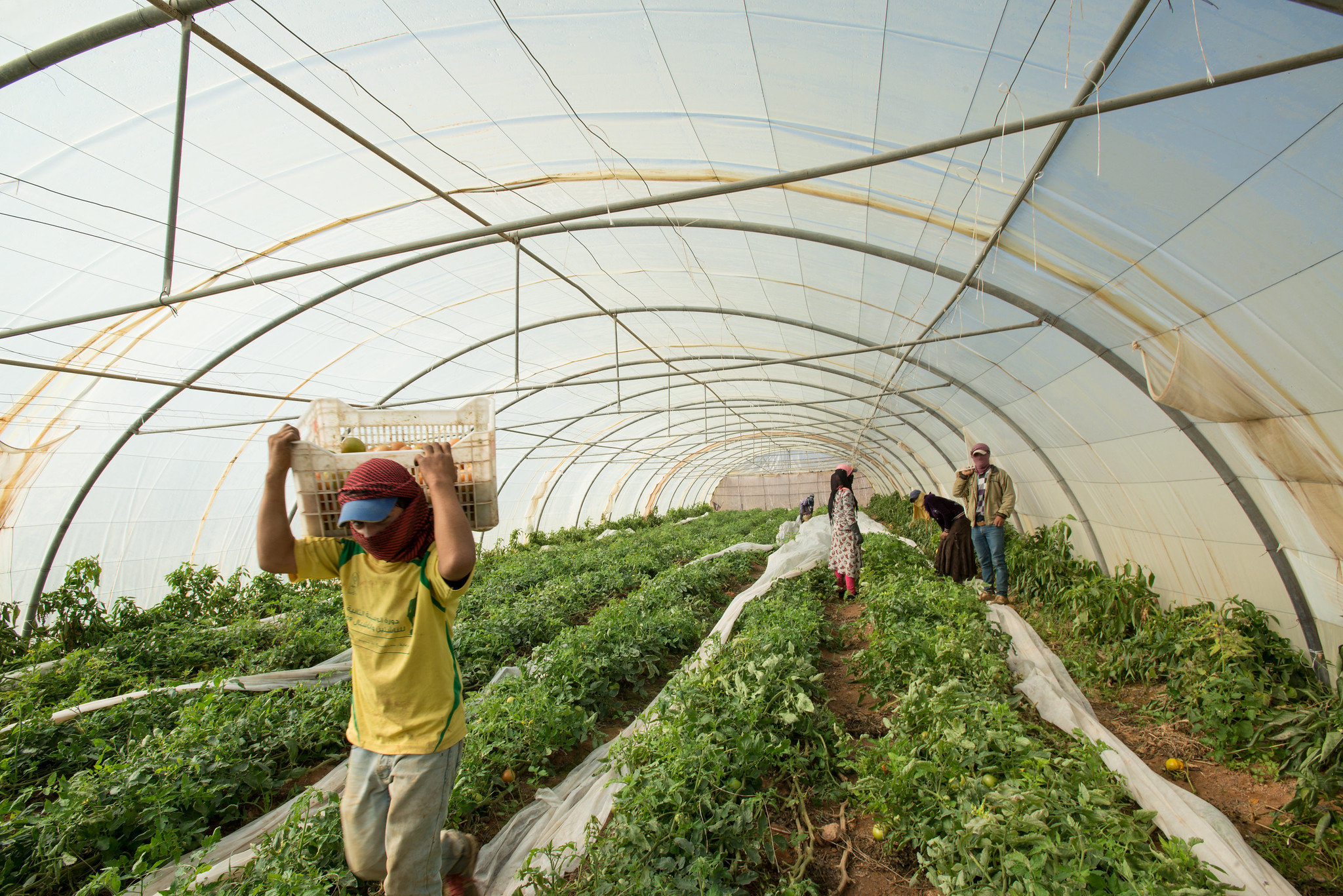
International Labour Migration Statistics (ILMS database)
Concise description of concepts and definitions, uses, sources and limitations for international labour migration statistics, including stocks and flows.

Promoting the use of administrative data sources for international labour migration statistics in Türkiye
This case study highlights Türkiye’s use of national frameworks for leveraging administrative data to generate labour statistics on international migrants. It also contributes to revising the 2018 ICLS Guidelines.

ILO global estimates on international migrants in the labour force
The report offers a thorough analysis of international migrants’ participation in the global labour force. It addresses key challenges while providing regional estimates highlighting the diverse dynamics of labour migration.
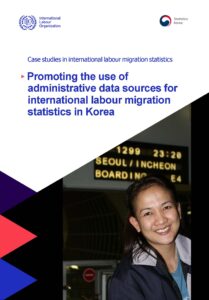
Promoting the use of administrative data sources for international labour migration statistics in Korea
This case study highlights how national frameworks in the Republic of Korea, including legislation, interagency coordination, and IT systems for secure data sharing, have increased
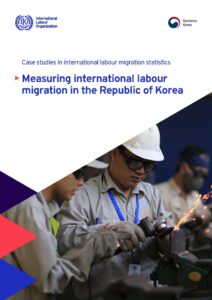
Measuring international labour migration in the Republic of Korea
This case study contributes to the ongoing revision of the ICLS Guidelines on statistics of international labour migration (2018) by demonstrating the value of different data sources in the Republic of Korea, including the population census, administrative records, and specialized migration surveys, to generate statistics on the topic.
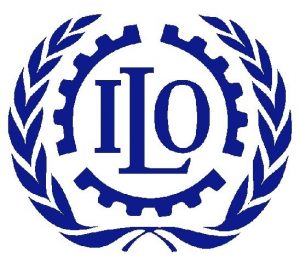
Sources and Methods Volume 9: International labour migration (2020)
This volume presents the sources and methods used in the compilation of international labour migration statistics, based on the ILO metadata survey conducted in 2015-2016 in ILO Member countries and territories.

Tutorials for data reporters
The ILMS questionnaire : concepts and indicators
Practical guide to complete the ILMS questionnaire
SDGs and labour migration
The 2030 Sustainable Development Agenda Declaration in its paragraph 29 states that: “We recognize the positive contribution of migrants for inclusive growth and sustainable development. We also recognize that international migration is a multi-dimensional reality of major relevance for the development of countries of origin, transit and destination, which requires coherent and comprehensive responses. We will cooperate internationally to ensure safe, orderly and regular migration involving full respect for human rights and the humane treatment of migrants regardless of migration status, of refugees and of displaced persons.” This objective is further concretized in SDG target 8.8: “Protect labour rights and promote safe and secure working environments for all workers, including migrant workers, in particular women migrants, and those in precarious employment” and in SDG target 10.7: “Facilitate orderly, safe, regular and responsible migration and mobility of people, including through the implementation of planned and well-managed migration policies”, which both clearly relate to ILO’s mandate as articulated most recently in the fair migration agenda.
The ILO is the custodian agency for further developing the methodology for two of the SDG target 8.8 indicators concerning occupational safety and health and freedom of association and collective bargaining, both to be disaggregated by sex and migrant status. Together with the World Bank, the ILO is also collecting data and developing a methodology to measure the cost of recruitment, which is one of the indicators under SDG target 10.7.
Learn more in the ILO self-paced e-course on measuring migrant recruitment costs for SDG indicator 10.7.1. The e-course provides an overview on how to produce data on SDG Indicator 10.7.1 to track progress towards achieving safe, orderly, and regular migration. It covers the global commitments, the definition of recruitment costs, data collection methods, survey questionnaire design, indicator calculation, analysis, tabulation and data reporting.
Publications
Note: Many publications are available only in English. If available in other languages, a new page will open displaying these options.

ILO global estimates on international migrants in the labour force
The report offers a thorough analysis of international migrants’ participation in the global labour force. It addresses key challenges while providing regional estimates highlighting the diverse dynamics of labour migration.
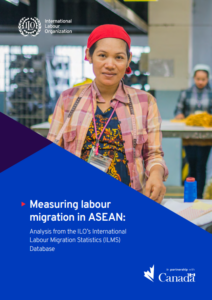
Measuring labour migration in ASEAN: Analysis from the ILO’s International Labour Migration Statistics (ILMS) Database
This report presents the latest statistics on international labour migration in ASEAN Member States, providing a comprehensive picture of the demographic profiles and work-characteristics of migrant workers in the labour markets of ASEAN countries of destination, as well as the flows of labour migration to and from the ASEAN region.

Report on Labour Migration Statistics in Africa (Third Edition, 2019)
This report outlines the labour migration trajectory in Africa and facilitates the design of informed policies and programmes for the effective protection of labour migrants and their families leading to the promotion of sustainable development in both countries of origin and destination.

International labour migration statistics in South Asia: Establishing a subregional database and improving data collection for evidence-based policy-making
This report provides a comprehensive analysis of statistics related to extraregional labour migration of South Asian nationals, referring to those migrating outside of the subregion from the following eight countries: Afghanistan, Bangladesh, Bhutan, India, Maldives, Nepal, Pakistan and Sri Lanka. Where applicable and relevant to the statistical discussion, this report also includes conversations on developments and trends in extraregional labour migration, migrant worker attributes (such as sex, skill level, occupation, country of destination, method of recruitment and more) and associated thematic areas (such as remittances) in South Asia.
